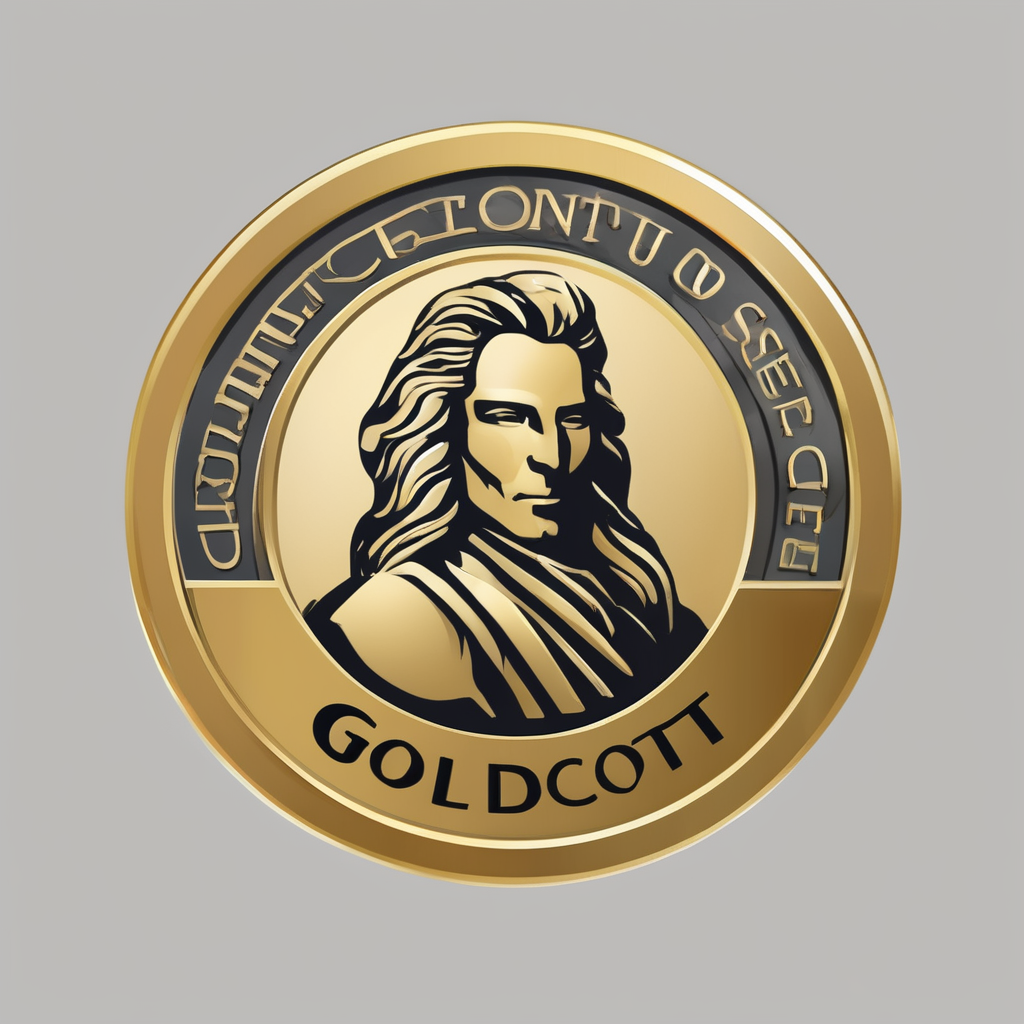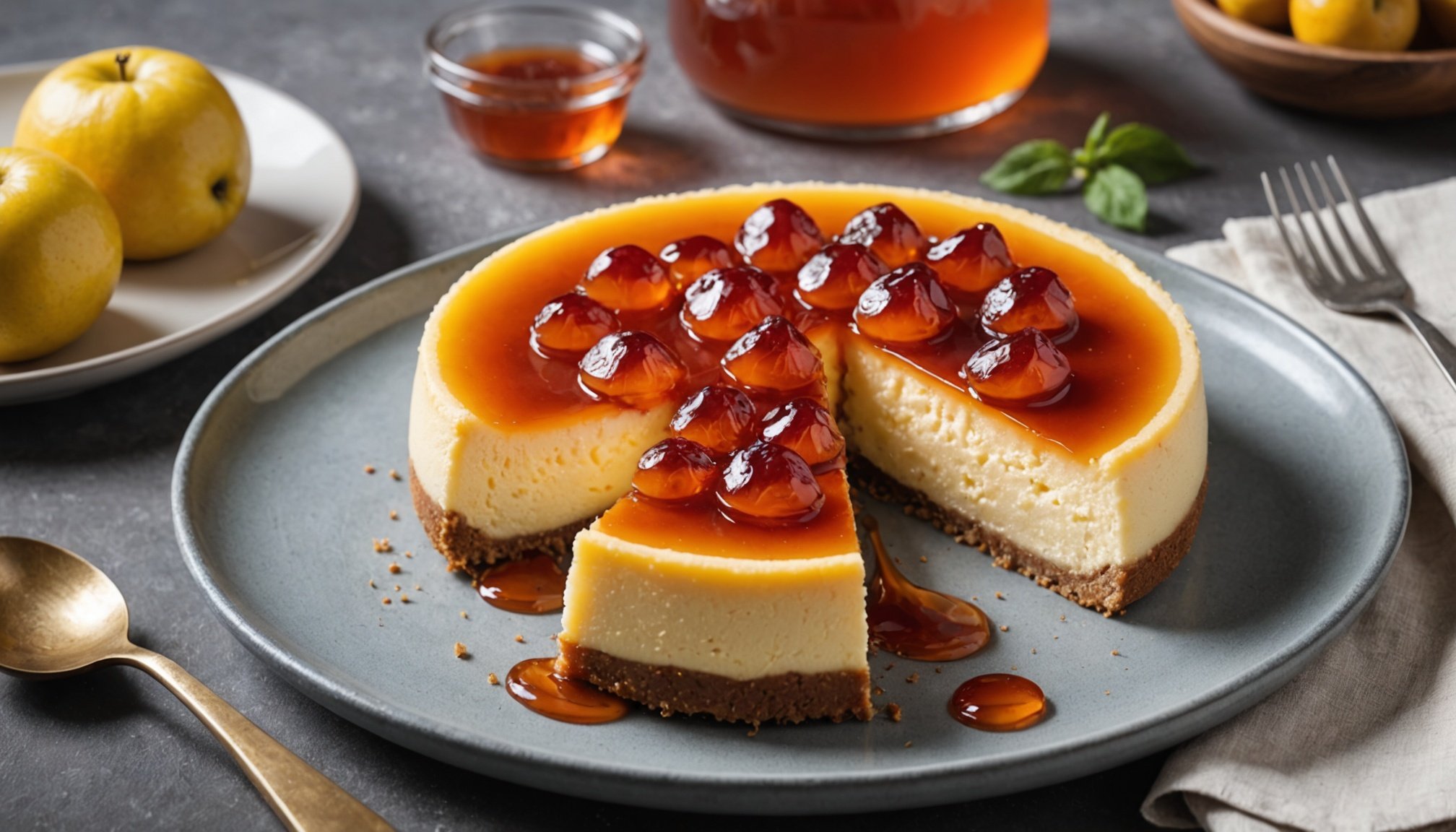Overview of Cheesecake Manchego
Cheesecake Manchego is a traditional Spanish dessert that elegantly pairs creamy textures with the boldness of Manchego cheese, offering a delightful introduction to Spanish pastries. Originating in Spain, cheesecake embodies a rich history intertwined with regional culinary traditions. While cheesecakes have long been a part of Spanish gastronomy, the infusion of Manchego cheese marks a distinguished innovation and regional pride.
Manchego cheese, with its distinctively tangy and nutty flavour, originates from the La Mancha region, celebrating the cultural richness of Spanish cheesemaking. Using this cheese, the cheesecake transforms into a savoury delight, making it unique compared to typical sweet cheesecakes found globally.
Have you seen this : Discover the Ultimate Recipe for a Juicy, Flavor-Packed Spicy Christmas Cake!
An essential component in this dessert is quince jelly, which boasts a glowing presence in Spanish cuisine. Traditionally, quince jelly acts as both a sweet topping and a complementary flavour to Manchego, highlighting the harmonic balance between sweet and savoury.
Historically, the marriage of these ingredients represents more than a dessert; it’s a tribute to Spain’s culinary tapestries. The ability of Cheesecake Manchego to merge diverse flavours exemplifies Spain’s gastronomic innovation and stands as a symbol within Spanish dessert culture.
Topic to read : Discover the Ultimate Recipe for Scrumptious English Beef Stew with Cloud-Like Dumplings
Ingredient List and Measurements
Embarking on the Cheesecake Manchego journey requires precision with its selection of ingredients. Sourcing quality items is paramount to ensure authentic flavor and texture. Here’s what you’ll need:
Cheesecake Ingredients:
- Manchego cheese: About 250g, finely grated, to benefit from its nutty essence.
- Cream cheese: 400g, specifying full-fat for a rich base.
- Sugar: 150g, adjusting to taste.
- Eggs: Three medium-sized, aiding in binding and texture.
- Heavy cream: 200ml, providing a creamy consistency.
- Butter: 75g, preferably unsalted, melted.
- Digestive biscuits: About 200g, crushed, for the base.
- Quince jelly: 150g, for an authentic Spanish touch.
Quality and Sourcing:
The choice of Manchego should reflect its origin from La Mancha, ensuring its tangy character. Fresh eggs and cream are integral for a smooth structure, while authentic quince jelly adds traditional vibrancy.
Measuring Techniques:
Accurate measures ensure consistency. Use a digital scale for precision, especially for cheese and sugar. Note that incorporating the right balance of ingredients directly influences the cheesecake texture. Understanding these basics will elevate the Cheesecake Manchego into a delectable Spanish masterpiece.
Step-by-Step Cooking Instructions
Crafting the perfect cheesecake recipe involves attention to detail in both preparation and execution. Begin by prepping your 9-inch springform pan with parchment paper, then move on to the crust. Combine crushed digestive biscuits with melted butter, pressing into the pan’s base. This foundation supports the cheesecake.
Move to the batter by blending cream cheese and sugar until smooth. Add eggs one by one, ensuring each is fully integrated. Follow by incorporating grated Manchego cheese, enriching with its distinctive flavour. Finish with heavy cream, ensuring a uniform blend.
For baking techniques, preheat your oven to 160°C (320°F). Place the cheesecake on a lower rack, baking for 55 to 65 minutes. Watch for a slight jiggle in the centre to know it’s done. Turn off the oven and let the cheesecake cool inside for an hour to prevent cracks.
The crucial cooling and setting process includes transferring the cake to a fridge for at least four hours. This phase ensures the texture consolidates into its famed smooth cheesecake character. With these steps mastered, your Cheesecake Manchego will emerge as a graceful and indulgent dessert delight.
Tips for Perfecting Cheesecake Texture
Achieving the ideal cheesecake texture combines artistry with precision. Here are some essential baking tips to elevate your smooth cheesecake game.
Firstly, ensure all ingredients are at room temperature. It promotes an even blend and reduces lumps in your batter. Overmixing introduces air, risking cracks during baking. For a creamy texture, mix until just combined.
Avoid temperature fluctuations by using a water bath during baking. This creates a gentle, consistent cooking environment, crucial for smooth cheesecake texture. The steam prevents the cheesecake from drying out, keeping it moist.
Mind your baking time closely. Overbaking compromises texture, leading to a dry finish. Look for a slight jiggle in the centre, indicating it’s set. Cool gradually. Sudden temperature changes can cause unsightly cracks on the surface. After baking, let it sit in the oven with the door slightly open before transferring to a cooling rack.
It’s essential to avoid common pitfalls. Do not rush the cooling process and resist opening the oven door too often. Both can lead to undesired cracks.
Adjusting for preferences involves experimenting. If denser texture is preferred, add an extra egg. For a lighter result, consider slightly reducing cream cheese.
Creative Serving Suggestions
Elevate your Cheesecake Manchego with thoughtful presentation and enticing serving ideas. Garnishing is key; consider fine drizzles of quince jelly to enhance flavour, adding a touch of sweetness and an appealing glow. Sliced almonds or a little sprinkle of sea salt can accentuate the tangy notes of Manchego cheese, creating a multi-layered flavour experience.
Presentation Tips
Visual appeal enhances the dining experience. For an elegant touch, serve slices on rustic wooden boards or contemporary slate plates. Add a sprig of mint or thin slices of fresh figs for a vibrant contrast. Simple yet sophisticated presentation styles can transform your dessert into a memorable highlight.
Pairing Suggestions
The bold flavours of Cheesecake Manchego pair beautifully with various beverages. Consider a crisp white wine, like Albariño, or a sparkling Cava for a refreshing twist. Coffee aficionados may prefer to complement the cake with a robust espresso. To complete a Spanish-themed menu, pair it alongside a citrusy dessert or serve with a selection of mixed nuts, further enhancing the cheesecake’s rich and nutty flavours. These presentation tips and pairing insights ensure an unforgettable dessert plating experience.
Variations on the Traditional Recipe
Exploring cheesecake variations opens a world of creative recipes waiting to be explored. Use alternative cheeses like Ricotta or Goat Cheese for a unique twist, offering a different flavour profile while maintaining a creamy consistency.
Incorporating seasonal fruit toppings can enhance the flavour, adding a fresh and vibrant touch. Consider using berries like raspberries or blueberries in the summer or pears and apples in the autumn. Infusing jams such as fig or apricot into the batter or the top layer brings a fruity delight to the cheesecake variations.
For those with dietary needs, adapt the recipe by using gluten-free biscuits for the base. Opt for lactose-free cream cheese or explore vegan alternatives using cashew cream and nutritional yeast to still deliver a delightful experience without compromising on richness.
Flavor adaptations might involve spices like cinnamon or cardamom to accent subtle notes or incorporating chocolate or caramel drizzles for added indulgence. Introduce these elements not just as creative flourishes but as thoughtful enhancements to explore cheesecake variations that respect tradition while inviting innovation.
Cultural Context and Significance
In Spanish dessert culture, desserts hold a cherished place, seamlessly interwoven into celebrations and daily life. Cheesecake Manchego exemplifies this cultural richness by blending traditional flavors with modern culinary flair.
The culinary importance of cheesecake in Spain is rooted in history, with variations across regions reflecting local ingredients and preferences. In Catalonia, for instance, a lighter cheesecake might feature Mató cheese. Meanwhile, in Castilian regions, a richer texture with Manchego cheese is preferred, highlighting its unique regional dishes appeal.
By incorporating Manchego cheese, renowned for its intense flavour, Cheesecake Manchego elevates traditional Spanish cheesecake, underscoring the La Mancha region’s identity. This integration not only respects historical practices but also showcases gastronomic creativity by balancing savory and sweet notes, reflecting remarkable culinary artistry.
In modern Spanish cuisine, Cheesecake Manchego represents evolving tastes while honoring time-honored practices. As international cuisine influences contemporary dining, this dessert remains an emblematic dish, embracing innovation without forsaking tradition. Its presence in menus worldwide signals the broader acceptance and appreciation of Spanish desserts, allowing them to bridge cultural gaps and invite enthusiasts to savour Spain’s diverse gastronomic heritage.
Visual Aids and Resources
In the domain of culinary arts, visual resources play an indispensable role, especially for those pursuing the perfect Cheesecake Manchego. They provide a clear window into the methodology and artistry required.
For novices and seasoned bakers alike, watching baking videos can offer valuable insights, showing techniques like crust pressing and batter blending in action. These videos are crucial as they bridge the gap between written instructions and real-life application, reducing uncertainty and improving confidence in executing the recipe.
Photographs and recipe photos documenting step-by-step processes support visual learners, making complex steps more accessible. Clear images can highlight crucial texture cues, like the desired smoothness of the cheesecake batter or the correct caramelization of toppings.
Exploring visual tutorials further enhances understanding, as they illustrate each phase of preparation, from ingredient assembly to final presentation. These tutorials often come with helpful tips and tricks from expert bakers, enriching the learning experience.
Reliable resources like renowned cooking outlets provide a treasure trove of videos and demonstrations, offering enthusiasts guidance to master the art of baking. By utilizing these visual aids, bakers can transform their culinary journey, ensuring their Cheesecake Manchego meets Spanish dessert culture’s high standards.





